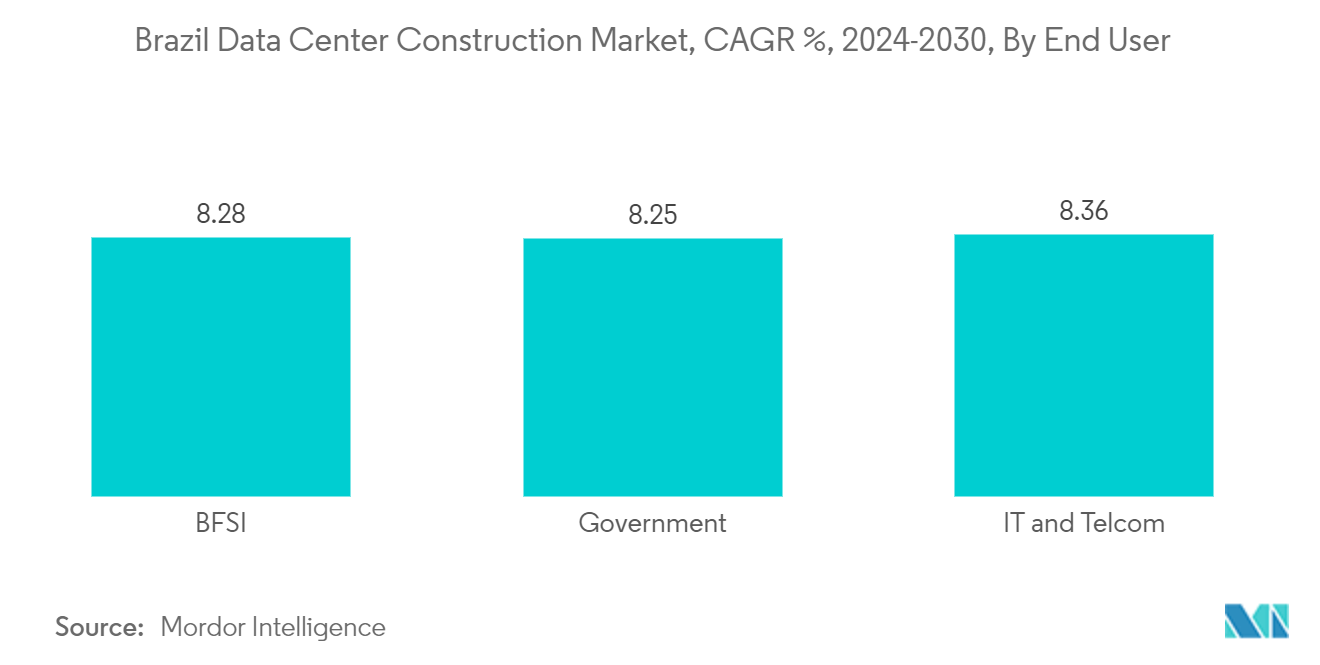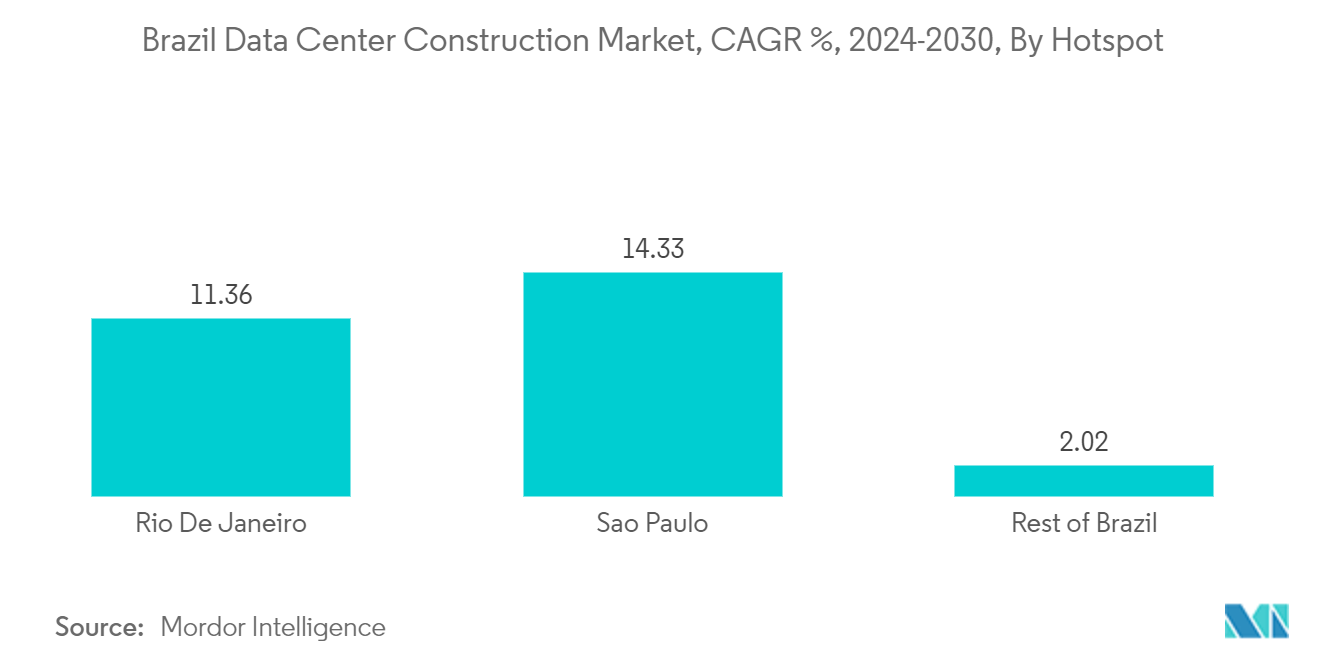Market Trends of Brazil Data Center Cooling Industry
IT and Telecom to Have Significant Market Share
- Among end-user industries, the cloud segment is expected to hold the largest market share and witness the fastest growth during the forecast period. Cloud services are essential for enabling SME growth, fostering innovation, closing the digital divide, saving public spending, and enhancing public services.
- Additionally, it is anticipated that the end users in the manufacturing, media and entertainment, financial services, and e-commerce sectors would accelerate the expansion of IT load capacity through increased data consumption. The Mexican government has launched research and development initiatives through the Secretariat of Economy and the National Council of Science and Technology (Conacyt) to spark Industry 4.0 in the country.
- SENER (the Secretariat of Energy), SICT (the Secretariat of Infrastructure, Communication, and Transportation), and SAGARPA (the Secretariat of Agriculture and Rural Development) are working on Industry 4.0 projects that encourage innovation to help the country's economy. Internet shopping would add to the rising data consumption as the user base increases. Due to the tempting bargains being offered, customers are expected to be more likely to shop online, which would increase demand for digital payment systems and website traffic, increasing data consumption further. The aggregate of all these influences would result in a significant rise in consumption, which is expected to drive the demand for data centers in the region.

Liquid Cooling to Have Significant Share
- In data centers, liquid cooling offers many benefits, and it is an attractive option for cooling computing environments with high performance. The use of liquid cooling has been shown to be more energy-efficient compared with conventional air conditioning. It reduces the need for overcooling and improves the energy efficiency of data centers by providing precise temperature control.
- Technological advances have helped to reduce the data center's water consumption by more than 15% in tropical climates and 80% in green areas, making liquid cooling easier to maintain, scale up, or be affordable. Energy used for liquid cooling may be recycled to heat buildings and drinking water, while advanced artificial refrigerants can significantly reduce the carbon footprint of air conditioners.
- Liquid cooling takes advantage of the space constraints and superior heat transfer properties of water or other liquids to provide efficient and cost-effective cooling of high-density racks up to 3,000 times more efficiently than air. Long proven in mainframe and gaming applications, liquid cooling is increasingly being used to protect rack servers in regional data centers. Recently, Vertiv introduced a water-efficient liquid cooling solution for high-density data centers, the Liebert XDU, a new generation of thermal management systems that supports liquid-cooled servers and enables the control of liquid quality, flow, and pressure.
- Furthermore, the government is expected to make more investments to innovate in areas such as quantum computing, artificial intelligence, and applications utilizing 5G and 6G technologies. Such aspects are expected to complement the growth and demand for data processing facilities in the telecom industry, which is expected to fuel the demand for DC cooling infrastructure in the country.


